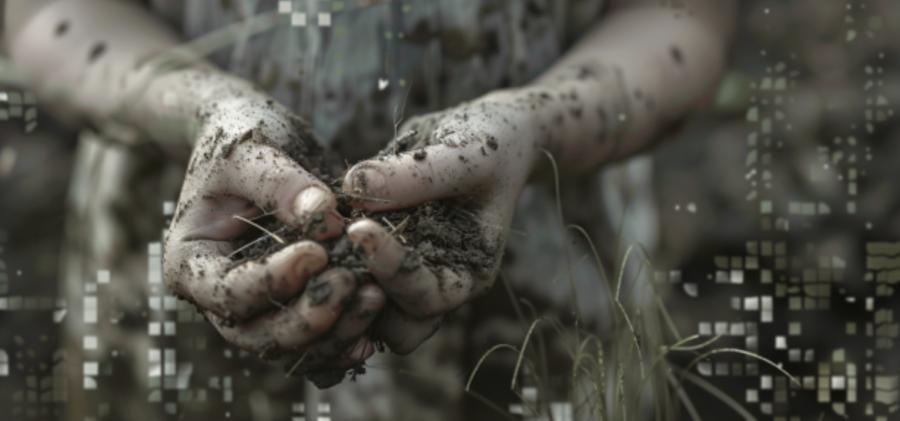The Curious Case of the Muddy Trousers
Somewhere between the invention of wet wipes and the rise of high-gloss playrooms, dirt quietly slipped off the guest list of childhood. It used to be a central character—smeared across cheeks, caked into fingernails, lurking ominously inside rain boots. Now? Dirt’s been demoted, banned to the borders of risk assessments and laminated hygiene policies. But perhaps it’s time we re-invite it, not just to the party, but to the front row.Because here’s the surprising thing: dirt isn’t dirty. At least, not in the way we think. It’s microbiologically thrilling, sensorily complex, and developmentally nutritious. And no, that’s not just poetic license. Studies suggest that early exposure to the microbes in soil helps train the immune system, much like a stubborn grandparent trains a toddler to say please. It builds resilience—not just in the body, but in the spirit too.
Hands in Soil, Brain on Fire
Let’s talk cognition. When a child plunges their fingers into soil, they’re not just digging for worms (though yes, that happens, and sometimes the worms are given names). They are engaging in an activity that lights up multiple regions of the brain. The sensory receptors in the skin feed information into neural pathways faster than a juice box disappears at snack time.Texture, temperature, resistance—all of these variations stimulate proprioception and tactile awareness. These might sound like dry neurological terms, but they’re foundational for skills like writing, dressing, and not falling over when the cat brushes past. The act of scooping, patting, and sifting soil strengthens fine motor skills and hand-eye coordination in a way no screen-based game ever could.
And then there’s the imagination. Dirt is rarely just dirt to a child. It is cake, lava, treasure, potion. It becomes whatever the game requires. There are no preset functions, no instructions in Comic Sans. This is open-ended play, where a stick can be a wand or a spanner or the handle of a giant subterranean crankshaft.
The Secret Curriculum of Mud Pies
For educators and parents aiming to nurture holistic development, it’s worth asking: what are children really learning when they’re elbow-deep in muck?- Cause and effect – Add water to dirt, get mud. Leave it in the sun, get cracks. Apply it to a sibling’s arm, get consequences.
- Scientific thinking – What happens if I mix this with that? What lives under this rock? Can a worm survive a ride in a toy dump truck?
- Resilience – The tower collapsed? Try again. Your mud cake has ants? Make a fresh one and call it “protein-rich.”
- Social learning – Playing in nature often leads to cooperation, negotiation, and occasional squabbles over whose stick is more magical.
Sanitised Spaces, Sanitised Minds
There’s a lingering cultural suspicion around mess. It’s often mistaken for chaos, neglect, or—horror of horrors—inefficiency. But mess is not the enemy of learning. It’s the crucible of it.Too many early learning environments now resemble boutique offices, all blonde wood and minimalist storage. There’s a scent of lavender and laminated flowcharts explaining the purpose of every shelf. The blocks go here, the felt pens there. You begin to wonder if children are welcome at all, or if they’re simply tolerated between cleaning shifts.
Meanwhile, dirt doesn’t care about your layout. Dirt does not respect zones. It gets under things and between things. It’s an anarchist. And in that chaos lies a special kind of freedom. When children are allowed to follow their noses into the garden or woods or compost heap, they’re not just escaping walls—they’re escaping fixed ideas. They’re learning that knowledge isn’t confined to worksheets or bullet points.
A Dirt‑Rich Childhood Doesn’t Require a Forest
Not every parent or early years setting has access to rolling meadows and woodland glades. The good news is that nature-based learning doesn’t demand a National Trust membership or a conveniently located babbling brook. A mud kitchen fashioned from old pallets and a bucket of soil will do nicely. A few plant pots, a raised bed, even a tray of sand or compost on a balcony—all perfectly valid portals to the sensory universe beneath our feet.Urban educators in particular have found inventive ways to reintroduce the natural world into concrete-heavy environments. Pop-up gardens in car parks. Nature walks that involve spotting weeds in pavements. Worm farms in old plastic bottles. It’s not about grandeur, it’s about attitude. If children are allowed to dig, poke, sniff, squelch, and wonder, you’re doing it right.
Dirt, in short, is democratic. It’s available in most postcodes. It doesn’t require batteries. It never runs out of ideas. There is no password-protected update required to make it function. And it doesn’t ask to be rated out of five stars. Which is more than you can say for most educational software.
But What About the Washing?
Ah yes. The laundry pile. The dread of any adult who has watched a child joyfully leap into what they later discover was not in fact “a puddle” but “a gateway to the underworld.” There is, admittedly, a cost. Clothes will be stained. Shoes may be lost. Occasionally, a sock will disappear forever, sacrificed to the deities of compost and chaos.But let us weigh this against what’s gained: a child who feels grounded, literally and figuratively. A child who is learning not just facts, but ways of being in the world—with curiosity, confidence, and joy. The cost is a spin cycle and a dash of detergent. The benefit is neurodevelopmental richness and a slightly feral sense of adventure.
Besides, modern washing machines are miracles of engineering. Embrace their purpose. Let them justify their existence. Send them the offerings of mud-streaked trousers and crumb-flecked jumpers. They can handle it.
Soil Searching
For early years practitioners, embracing nature-based play means a shift—not only in how space is used, but in how learning is defined. It’s less about delivering outcomes and more about observing possibilities. It means relinquishing a little control, tolerating a bit more mess, and trusting in the genius of mud.It also requires advocacy. Convincing anxious parents that yes, your child will come home dirty, and no, it doesn’t mean standards have slipped. In fact, quite the opposite. It may help to share evidence from child development research, or—failing that—show them a photo of their child beaming, cheeks muddy, eyes bright, holding a worm like it’s a new puppy.
And let’s be honest: we remember these moments. Not the clean worksheets, but the times our fingers were caked with earth and we unearthed something weird and wriggly and wonderful. It stays with us, in ways that screen-time rarely does.
Ground Control to Major Fun
There’s a reason the smell of soil after rain is one of the most universally loved scents on earth. It connects us to something ancient, something unmanufactured. For children, playing in dirt isn’t nostalgic—it’s now. It’s real. It’s wildly unpolished and, frankly, that’s its magic.So the next time you’re tempted to wipe that mud off too quickly, take a beat. It’s not just grime. It’s evidence of a developing brain, a grounded nervous system, and a joy that doesn’t need to be taught.
Let dirt back in. It knows what it’s doing.
Article kindly provided by portfieldfarmnursery.com



